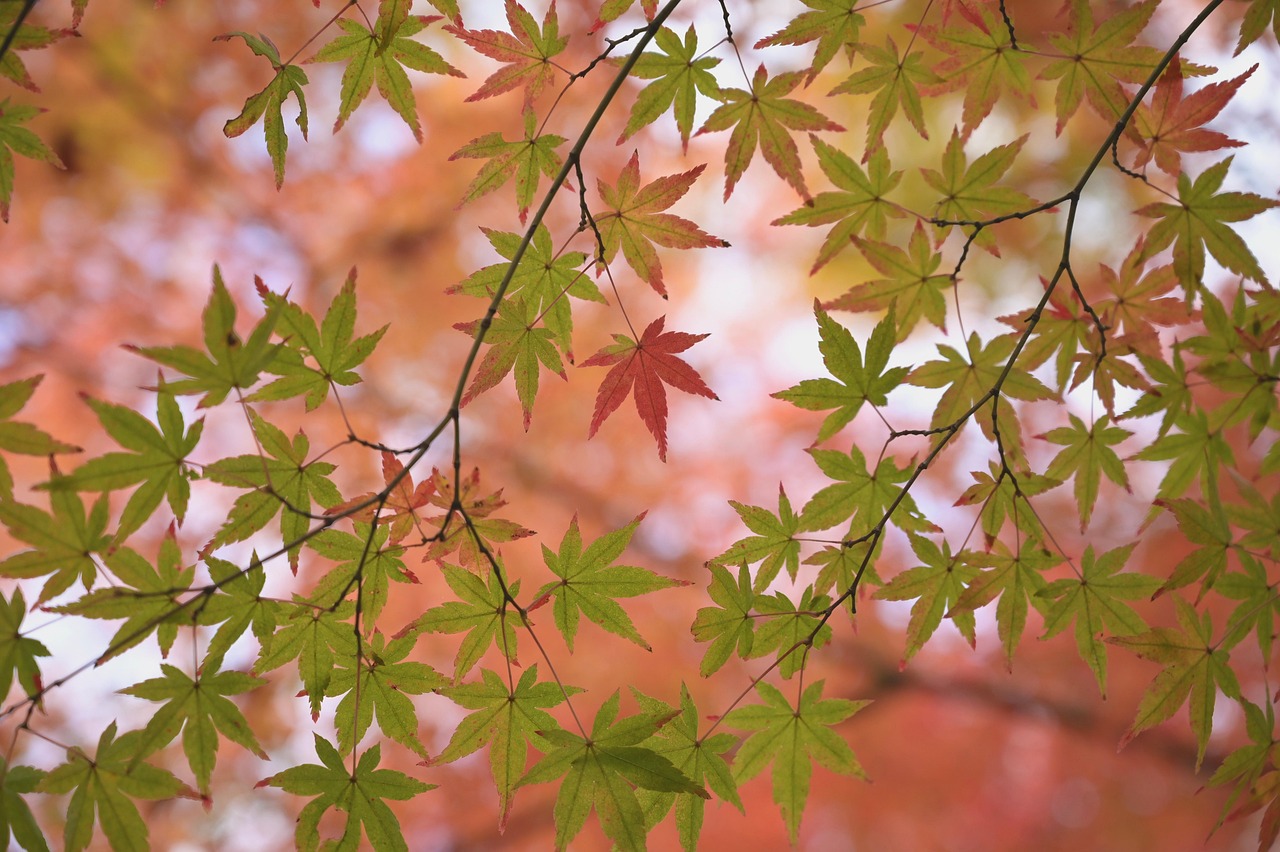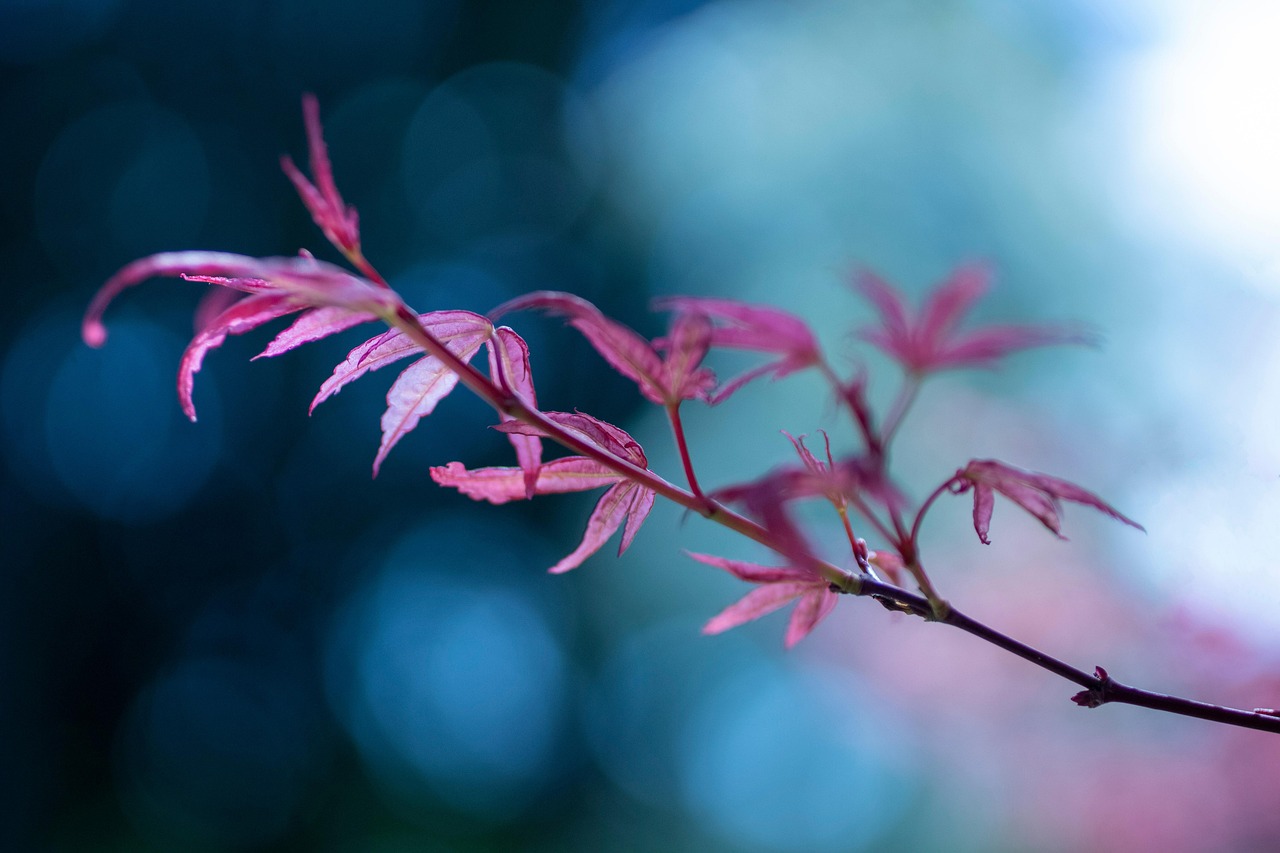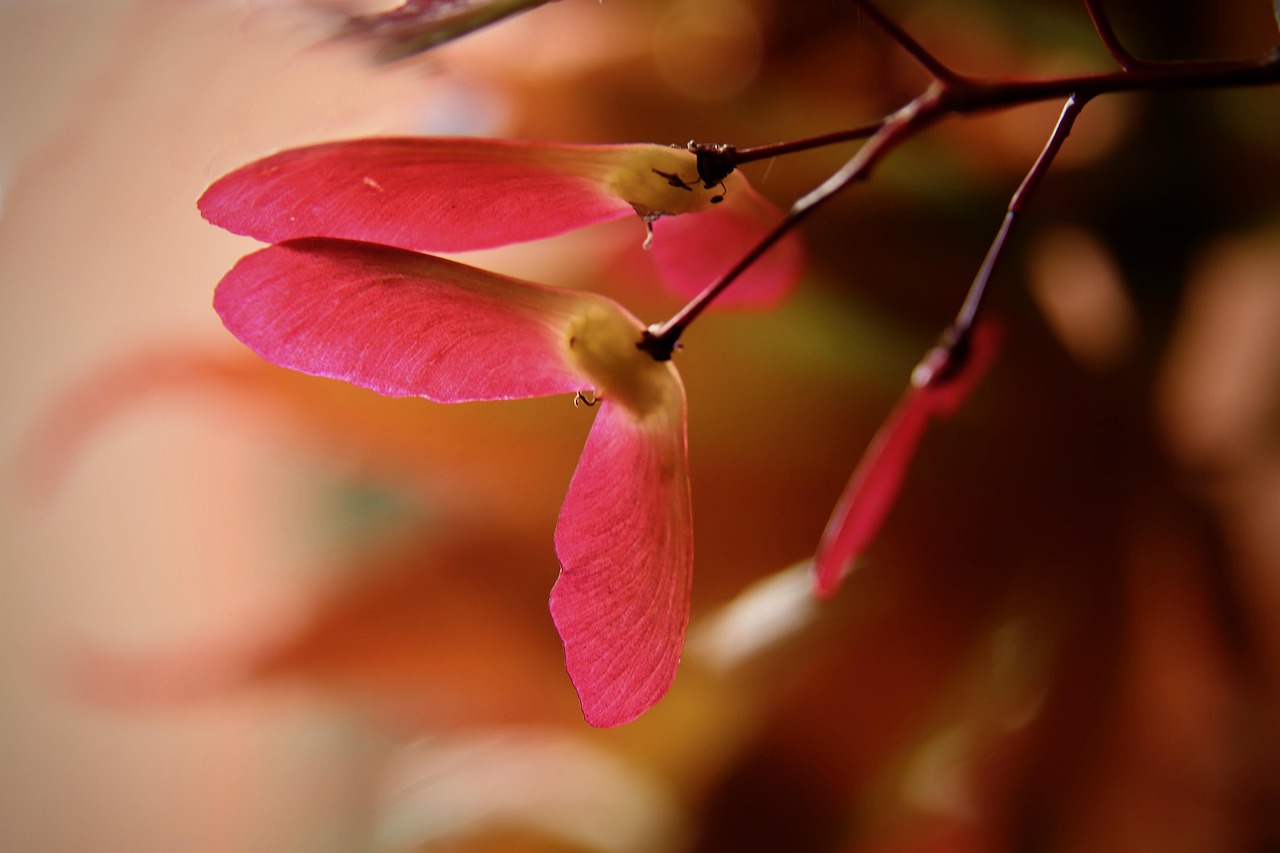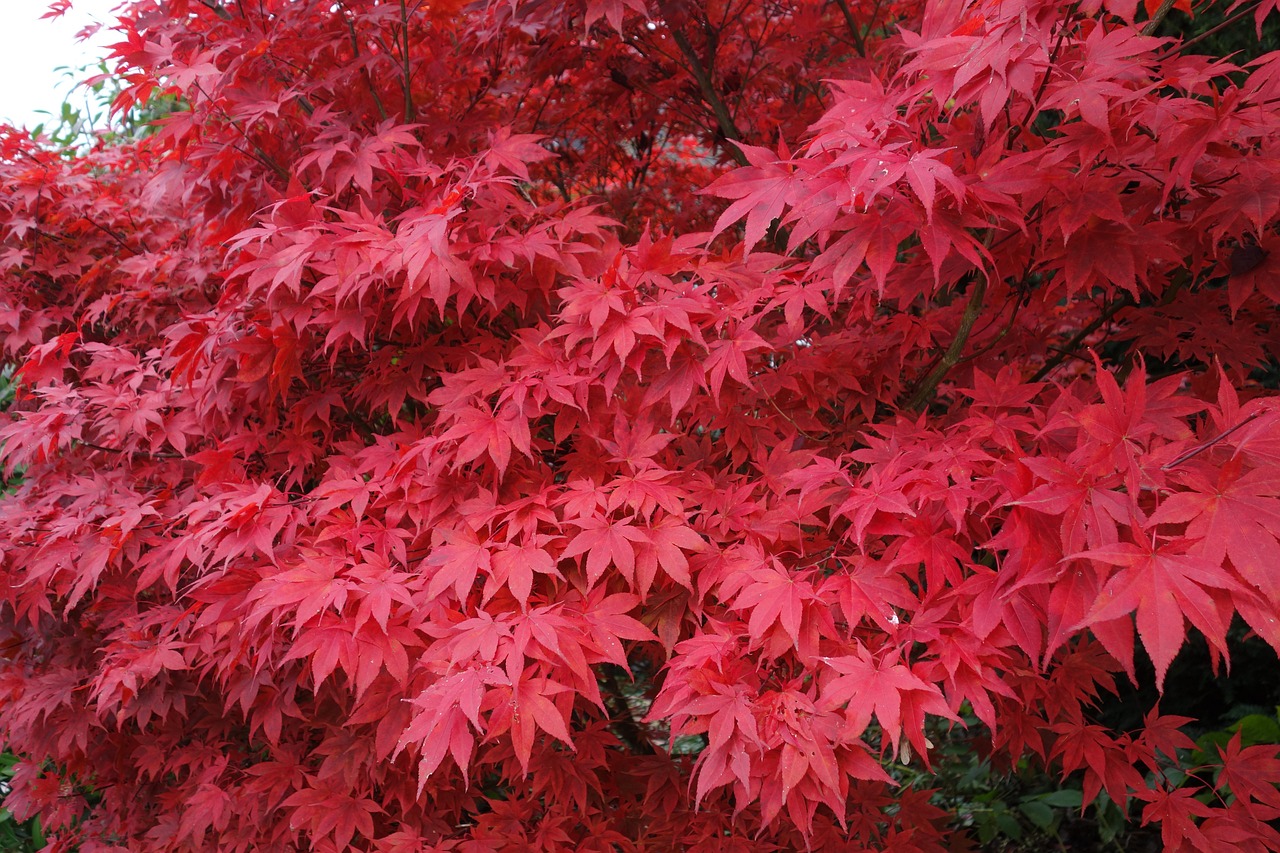Pruning Japanese Maple trees for bonsai-style aesthetics involves careful trimming to enhance their natural beauty and shape. This process improves air circulation, promotes healthy growth, and maintains the desired miniature form.
Japanese Maple trees, known scientifically as Acer palmatum, are cherished for their stunning foliage and elegant shapes. These trees are a popular choice among bonsai enthusiasts due to their intricate leaf patterns and vibrant color variations. Pruning is essential in bonsai cultivation as it helps shape the tree while ensuring it remains healthy and aesthetically pleasing.

The art of pruning is not merely about cutting branches. It involves understanding the growth patterns of the tree and applying techniques that encourage the desired look. Pruning can enhance the natural structure of the tree, allowing light to penetrate and air to circulate effectively. This is crucial for maintaining the health of the tree, preventing diseases, and promoting lush foliage.
Understanding Japanese Maple Trees
Before diving into pruning techniques, it’s important to understand the characteristics of Japanese Maple trees. They typically exhibit a range of growth habits, from weeping forms to upright varieties. The leaves can vary greatly in shape, size, and color, adding to their allure.
| Variety | Growth Habit | Leaf Color | Height |
|---|---|---|---|
| Bloodgood | Upright | Deep Red | 15-25 feet |
| Green Laceleaf | Weeping | Green | 3-5 feet |
| Sango Kaku | Upright | Green with Coral Bark | 15-20 feet |
When growing Japanese Maple trees in bonsai form, the goal is to create a miniature version that reflects the elegance of a full-sized tree. This involves not just pruning but also wiring and positioning branches to achieve balance and proportion.

Pruning Techniques for Bonsai Aesthetics
The best time to prune Japanese Maple trees is during their dormant season, typically in late winter or early spring. This timing allows for minimal stress on the tree and encourages vigorous growth when spring arrives. However, light pruning can also be done throughout the growing season to maintain shape.
There are several techniques used in pruning Japanese Maple trees for bonsai aesthetics:
- Crown Reduction: This technique involves reducing the size of the tree’s canopy. It creates a more compact appearance while allowing light to reach lower branches.
- Branch Thinning: Removing selected branches helps improve airflow and sunlight penetration. This also diminishes overcrowding in the canopy.
- Pinching: Pinching back new growth encourages bushiness. This technique is often used in the growing season to refine the shape.
- Wiring: Wiring branches allows for strategic positioning. It helps guide the growth direction while maintaining a natural look.
Each of these techniques requires precision and an understanding of the tree’s growth patterns. Proper tools, such as sharp pruning shears and bonsai wire, are essential for making clean cuts and adjustments without damaging the tree.

The Importance of Timing and Tools
Timing is critical when it comes to pruning Japanese Maples. Pruning too early can damage new buds, while pruning too late may hinder growth during the active season. Observing the tree’s growth cycle will help determine the optimal times for each technique.
The right tools also contribute significantly to successful pruning. High-quality bonsai shears, concave cutters, and wire are fundamental in achieving clean cuts and shaping branches effectively. It is essential to sterilize tools before use to prevent disease transmission between plants.
The aesthetic beauty of a pruned Japanese Maple can be both captivating and rewarding. As you learn to navigate the nuances of pruning, you will develop a deeper appreciation for this art form and its ability to transform a simple tree into a stunning piece of living art.

Understanding Growth Patterns
To successfully prune Japanese Maple trees for bonsai aesthetics, one must first understand their growth patterns. These trees exhibit unique characteristics throughout the seasons. Knowing when and how they grow will significantly influence your pruning approach.
Japanese Maples have a combination of rapid growth in spring and a slower pace during the fall. During the spring, new shoots emerge, and leaves unfurl, creating a vibrant display. Understanding this cycle is vital for timing your pruning effectively.
Growth Phases
Japanese Maples go through several distinct growth phases:
- Bud Break: Occurs in early spring when buds swell and begin to open. This is the ideal time to assess the tree’s structure.
- Leaf Expansion: As leaves unfold, it is essential to monitor any errant growth that may need adjustment.
- Active Growth: This phase lasts until late summer. Pruning during this time should be minimal and focused on shaping.
- Dormancy: In late fall, trees prepare for winter. This is the best time for extensive pruning as the tree is less stressed.
Recognizing these phases helps in making informed decisions about when to prune and what parts of the tree need attention.
Key Pruning Techniques
While understanding growth patterns is crucial, specific pruning techniques are equally important. Each technique serves a purpose in shaping the tree while maintaining its health.
Crown Thinning
Crown thinning is a technique aimed at reducing the density of branches in the canopy. This allows light to penetrate deeper into the tree and encourages healthy leaf development. Here are steps to follow:
- Identify crowded areas in the canopy.
- Choose smaller, weaker branches to remove.
- Make clean cuts close to the branch collar to promote healing.
Directional Pruning
This technique involves pruning branches to achieve a desired direction of growth. By selectively cutting branches, you can guide their growth towards a specific shape or style. Follow these guidelines:
- Assess the tree’s natural shape and identify branches that disrupt it.
- Remove branches that grow inward or downward.
- Encourage outward growth by selectively pruning lateral branches.
Leaf Pruning
Leaf pruning involves selectively removing leaves to enhance light penetration and improve air circulation within the canopy. This technique is particularly useful during the growing season. Here’s how to do it:
- Choose leaves that are overly large or crowded.
- Pinch off smaller leaves at their base without damaging the stem.
- Aim for a balanced distribution of leaves across the tree.
Wiring Techniques for Shaping
Wiring is another vital technique for shaping Japanese Maple trees into bonsai forms. It involves wrapping wire around branches to manipulate their position. Proper wiring can enhance the overall aesthetics of your bonsai. Consider these steps:
- Select the Right Wire: Use aluminum or copper wire, which are both flexible and strong.
- Wire Placement: Start from the trunk and work your way outwards. Ensure that the wire is not too tight to avoid damaging the bark.
- Adjusting Branches: Gently bend branches into the desired position while securing them with wire.
- Monitoring Growth: Regularly check wired branches for growth. Remove wires before they cut into the bark.
The Role of Soil and Fertilization
The health of your Japanese Maple tree directly influences its ability to thrive after pruning. Soil quality and fertilization play critical roles in this process.
A well-draining soil mix is essential for Japanese Maples. It should retain some moisture while allowing excess water to drain away. Here’s how to choose the right soil:
- Components: Use a mix of akadama, pumice, and lava rock for optimal drainage and nutrients.
- Organic Matter: Incorporate organic compost to support healthy root development.
Fertilization also supports growth and recovery after pruning. Apply a balanced fertilizer during the growing season to provide essential nutrients:
- Nitrogen: Encourages leaf growth and overall vigor.
- Phosphorus: Supports root development and flowering.
- Potassium: Aids in overall plant health and disease resistance.
The combination of appropriate soil and fertilization ensures that your Japanese Maple can recover quickly from pruning while maintaining its aesthetic appeal.
Common Mistakes in Pruning Japanese Maples
Pruning Japanese Maple trees for bonsai aesthetics can be a rewarding experience, but it is also easy to make mistakes. Understanding these common pitfalls can help you achieve better results and maintain the health of your tree.
Over-Pruning
One of the most frequent errors in pruning is over-pruning. This occurs when too many branches are removed at once, leading to stress on the tree. Symptoms of over-pruning may include:
- Weak new growth.
- Increased vulnerability to pests and diseases.
- Reduced leaf size.
To avoid over-pruning, it is advisable to remove no more than 25% of the tree’s foliage in a single session. This gradual approach helps the tree recover more effectively.
Improper Timing
Timing is crucial when it comes to pruning. Pruning at the wrong time can damage new growth or inhibit the overall health of the tree. Here are some signs that indicate poor timing:
- Pruning during active growth may expose the tree to stress and potential disease.
- Cutting branches just before winter can leave the tree vulnerable to frost damage.
Always aim to prune during the dormant season, ideally late winter or early spring, to minimize stress and promote healthy growth.
Signs Your Maple Needs Pruning
Understanding when your Japanese Maple needs pruning is essential for maintaining its health and aesthetics. Here are several signs that indicate it is time to prune:
- Crowded Canopy: If branches are overlapping or crowded, it may be time to thin out the canopy for better air circulation.
- Dead or Diseased Branches: Removing any dead or diseased branches is crucial for preventing the spread of illness within the tree.
- Unruly Growth: If your tree has grown unevenly, selective pruning can help restore balance and shape.
- Excessive Leaf Growth: If your Maple has an abundance of foliage but lacks structure, strategic pruning can promote better form.
Seasonal Care After Pruning
After pruning your Japanese Maple, seasonal care becomes essential to support recovery and growth. Implementing proper aftercare can ensure that your tree thrives post-pruning.
Watering Regimen
Proper watering is a key factor in post-pruning care. Here are some guidelines to follow:
- Avoid Overwatering: Ensure that the soil does not become soggy, as excessive moisture can lead to root rot.
- Consistency is Key: Water the tree consistently, allowing the top inch of soil to dry between waterings.
- Watch for Signs of Stress: If leaves start wilting or dropping off, adjust your watering schedule accordingly.
Nutrient Management
Providing adequate nutrients post-pruning helps your Japanese Maple recover. Consider these steps:
- Avoid Fertilizing Immediately: Allow the tree some time to recover from pruning before applying fertilizer.
- Use Balanced Fertilizer: Once the tree shows signs of new growth, apply a balanced fertilizer to support recovery.
- Avoid Excessive Nutrients: Too much fertilizer can lead to weak growth and should be avoided.
The Aesthetic Potential of Pruned Japanese Maples
A well-pruned Japanese Maple can be a stunning centerpiece in any garden. The aesthetic potential of these trees lies in their intricate branching patterns and vibrant foliage. Below are some ways pruning enhances their beauty:
Creating Visual Balance
Pruning contributes significantly to the visual balance of a Japanese Maple. By removing uneven growth, you can achieve a more symmetrical appearance. This balance enhances the overall beauty and harmony of your bonsai tree.
Emphasizing Foliage Color
The vibrant colors of Japanese Maple leaves can be showcased through careful pruning. By thinning out crowded areas, you allow sunlight to reach more leaves, enhancing their color vibrancy. This technique is particularly effective during the fall when their hues are at their peak.
Encouraging Unique Shapes
Bonsai enthusiasts often aim for specific shapes that reflect natural landscapes or artistic visions. Pruning allows you to manipulate the shape of your Japanese Maple into graceful forms. Techniques like directional pruning and wiring help achieve these desired aesthetics.
| Shape Type | Description | Pruning Technique |
|---|---|---|
| Broom Style | A rounded top with branches radiating outward from a central trunk. | Crown thinning and directional pruning. |
| Informal Upright | A naturalistic shape with an irregular trunk and branches. | Selective branch removal for balance. |
| Weeping Style | A cascading effect with drooping branches. | Wiring and gentle bending of branches. |
The combination of skillful pruning and care allows you to unlock the full aesthetic potential of your Japanese Maple, creating a beautiful bonsai that reflects your artistic vision.
As you embark on your journey of pruning Japanese Maple trees for bonsai-style aesthetics, it is essential to continuously observe and adapt your techniques. Each tree is unique, and understanding its specific needs will contribute to achieving the desired bonsai form. This adaptability ensures that you can respond to any changes in growth patterns or health conditions of the tree.
Long-Term Care and Maintenance
Once you have established a well-pruned Japanese Maple, ongoing care is crucial for maintaining its beauty and health. Post-pruning care does not end after the initial cuts; it requires a consistent approach throughout the tree’s life. Here are some long-term care tips:
- Regular Inspections: Frequently check your tree for signs of pests or diseases. Early detection can prevent larger issues from developing.
- Seasonal Pruning: Continue to prune lightly during the growing season to maintain shape and remove any unwanted growth.
- Monitor Water Needs: Adjust your watering routine based on seasonal changes and the tree’s growth stage.
- Fertilization Schedule: Establish a fertilization schedule that meets the nutritional needs of your tree throughout the year.
Cultivating a Bonsai Community
Engaging with a community of bonsai enthusiasts can enrich your learning experience. Many local clubs and online forums offer valuable resources, tips, and support. Here are some benefits of joining such communities:
- Shared Knowledge: Gain insights from experienced bonsai practitioners who can share their techniques and experiences.
- Workshops and Demonstrations: Participate in hands-on workshops that allow you to practice techniques under expert guidance.
- Networking Opportunities: Connect with other bonsai lovers, which can lead to friendships and collaborative projects.
- Access to Resources: Find useful resources such as books, tools, and materials through community recommendations.
Understanding Different Styles
Japanese Maple trees can be styled in various ways, each reflecting an artistic choice. Here are some additional bonsai styles you may explore:
- Multi-Trunk Style: This style features several trunks emerging from the same root base, creating a dense, bushy appearance.
- Root Over Rock: This technique involves growing the tree’s roots over a rock, emphasizing its connection to nature.
- Forest Style: A group planting of several trees together, mimicking a natural forest setting.
Each style has its own set of pruning techniques and considerations. Experimenting with different styles can help you refine your skills and find what resonates with your artistic vision.
Final Thoughts
Pruning Japanese Maple trees for bonsai-style aesthetics is both an art and a science. It requires patience, practice, and a deep understanding of the tree’s growth habits. As you apply the techniques discussed in this article, remember that every cut contributes to the overall shape and health of your tree.
The journey of cultivating a bonsai is rewarding. Not only do you create a living piece of art, but you also forge a deeper connection with nature. By nurturing your Japanese Maple, you participate in a tradition that has been cherished for centuries.
Your efforts will yield beautiful results that reflect both your skill and creativity. Embrace the learning process, seek knowledge from others, and enjoy every moment spent caring for your bonsai Japanese Maple. In doing so, you will find satisfaction in watching your artistic vision come to life.
